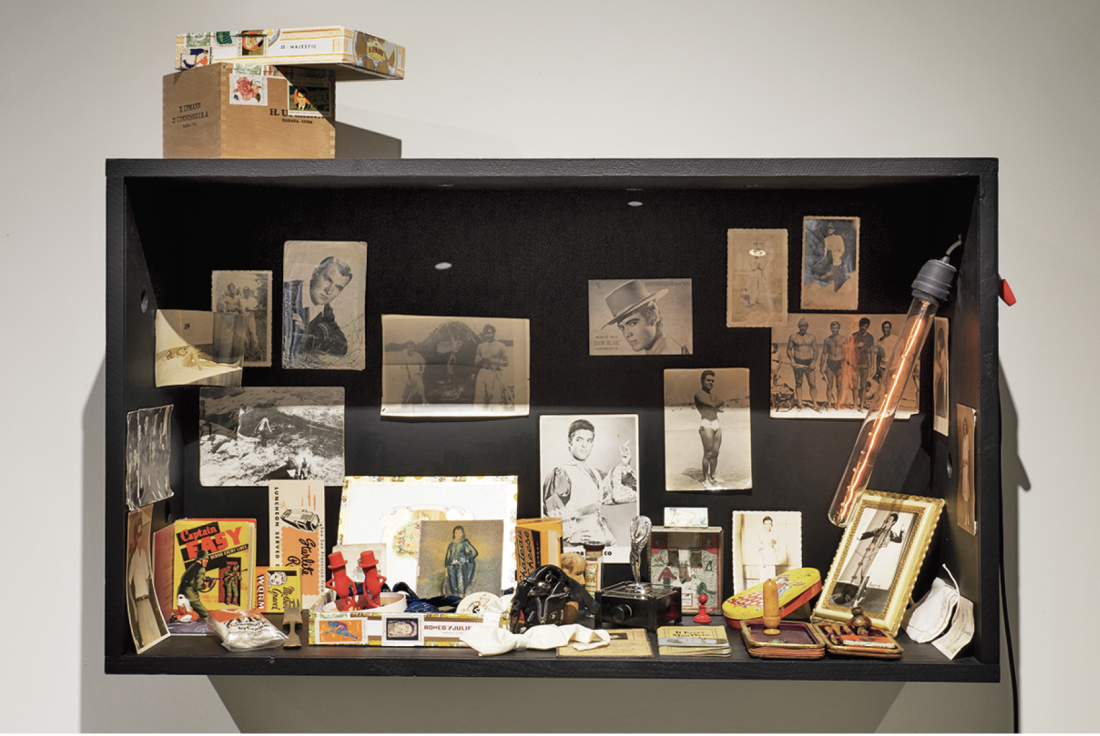Gilles Hébert
When Roland Barthes’s mother died in 1977, Barthes found himself looking through photographs of her, trying to return to some essential bond he felt had been undone. During one such meditation, he had an epiphany which he reported in his subsequent book Camera Lucida, an epiphany whose significance extended into a general phenomenology of photography: “By attributing that the object has been real, the photograph surreptitiously induces belief that it is alive, because of that delusion that makes us attribute to Reality an absolutely superior, somehow eternal value; but by shifting this reality to the past (‘this-has-been’), the photograph suggests that it is already dead.” This, for Barthes, represents the “melancholy of photography,” a melancholy strongly evoked in Gilles Hébert’s exhibition “PullFreight” at Actual Gallery.
For over 30 years, inspired in part by his friend and fellow collector Walter Lewyc (about whom more later) and continuing during time spent in Cuba, Hébert began collecting photographs, postcards, old glasses, cigarette cases, jewellery, strange miniatures: a prodigious variety of objects that function as a fragmentary aide de memoire. Who wore that particular hat pin? Was it the woman in this photograph? Did she vacation at the location depicted in this postcard? Was that a happy time for her? Is she still alive?

Gilles Hébert, My Name is Mike, Momento Wall Station 03, 2015, 37 x 21.5 cm. Collections of ephemera. All Photos: Ashley Gillanders. All images courtesy Actual Contemporary, Winnipeg.
These questions inhabit this exhibition. There are 14 black dioramas, each representing a particular “person;” each box contains four essential objects: a gold-framed photograph of the diorama’s subject, a hand of cards (as in a poker game) contained in a small cloth bag, a solitary chess piece and a source of electric illumination (a lamp, a wall sconce, a miniature camera). Supplementing these four elements are a collection of photographs, postcards and objects carefully arranged in baroque detail, which taken collectively give a fragmentary portrait of a particular individual, or more specifically, the convoluted interaction between our imaginary self-identification and the subjectivity revealed by our subconscious actions and desires. The subjects imagined here define themselves by roles they inhabit—the Diplomat, the Spy, the Man of Industry—or exemplify a specific personality: the romantic, the sexual predator, the lover of children, the (closeted?) gay male, the dreamer of luxury. This latter, represented in An Evening in Paris with Jesus, will serve as an example of how the other dioramas function. In the black box in which this collection is maintained, blue, silver and pearl predominate, an effect highlighted by the blue light bulb in a snowflake wall sconce that illuminates the objects. In the centre, a blue square of glass frames a chrome effigy of Jesus, itself complemented by some pearl earrings and a diamond-encrusted lapel pin. To the left, an ivory powder case, a gold cigarette lighter and a gold-rimmed aperitif glass. To the right, three cigar boxes are arranged in studied disarray. Behind the effigy of Jesus, a translucent bar of soap, also blue, stands next to a blue bottle of perfume: An Evening in Paris, whose scent is detectable as you lean in to examine the details of the collection. (No longer in production, Hébert took pains to obtain it for this purpose). Surrounding all of these objects, we find numerous pictures of one particular woman, grinning broadly and posing with and without a parasol. The overall effect is that of a presentation of a vivacious and spirited young woman, at times campy and at times perhaps a bit hedonistic; certainly, a person with a rich and vibrant interior life.

Installation view, “PullFreight,” 2015, Actual Contemporary.
And she is almost certainly dead. As with all the objects and photos in An Evening in Paris, none of the items in this incomplete portrait date past the early 1960s (most, considerably before then). The archaic perfume of An Evening in Paris with Jesus, which to many people of a certain age will generate Proustian recollections of their grandmothers, evokes the affect of loss and faded mourning that pervades this exhibition. For this is indeed an exhibition whose muse is mourning; Walter Lewyc has, like the people in the photographs, passed away. His presence is rendered in the ghostly, half-completed film from the 1990s in which Lewyc, dressed in a Greco-Roman tunic and garland, scrambles through disordered piles of stone and ruin; again, a deliberate archaism that marks the irreversibility of time’s arrow. What is of particular interest, in this case, is how this effect is generated. For Barthes, the photograph had a certain privileged relationship with death. But while photographs are everywhere in “PullFreight” (and it should be noted that “to pull freight” is, in 1950s Beat idiom, “to clear off,” “to check out,” to die), they are supplemented by the bricolage of jewels, perfume bottles and kitsch icons. The visual pleasures of the photographs are provided with sensory prosthetics involving the tactile and aromatic as a means of intensifying the photographic affect. This multi-sensory aid, however, challenges photography’s privileged relation to memory and death, treating it as one object among others. This reduction of the photographic image might, arguably, represent a significant moment in the history of perception, a moment in which Gilles Hébert’s work takes part. ❚
“PullFreight” was exhibited at Actual Contemporary, Winnipeg, from June 18 to August 20, 2015.
Tom Kohut is a new media critic, curator and theorist living in Winnipeg, Canada. He is the co-editor of Marshall McLuhan and Vilém Flusser’s Communication and Aesthetic Theories Revisted.

